Among the most noteworthy Irish expatriates reposing in Green-Wood are Matilda Tone, widow of United Irishmen leader Wolfe Tone, and their son William Theobald Wolfe Tone. William is buried with his wife, Catherine Sampson Tone, and in the plot right next to the Tones lie her parents: the controversial civil rights attorney William Sampson and his wife, Grace.
The Green-Wood Cemetery, a National Historic Landmark, covers nearly five hundred acres in Brooklyn, New York. Established in 1838, it was one of the first in the “rural cemeteries” movement, a farsighted plan to replace the antiquated, often unsanitary city churchyards with more hygienic, aesthetically pleasing final resting places. The driving force behind the establishment of Green-Wood was a small group led by financier and resident of the then-termed “City of Brooklyn,” Henry Evelyn Pierrepont.
By the 1860s, the cemetery drew 500,000 visitors a year, second only to Niagara Falls as the most popular attraction in the U.S. Today, Green-Wood is the final resting place of 560,000 and is still an active cemetery. Its rolling hills and valleys are dotted with ponds and lined with walking paths that bring thousands of visitors a year, from history buffs to bird watchers, who come to see the vast array of birds that live in Green-Wood’s trees.
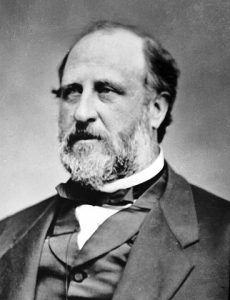
While Green-Wood was never affiliated with any particular church, and from its inception has remained rigorously non-sectarian, it was generally considered a Christian burial place reserved for white Anglo-Saxon Protestants of the better classes. Indeed, one of its regulations was that no one executed for a crime or even dying while incarcerated would be permitted burial there. Although he died in the Ludlow Street Jail, the family of William Magear “Boss” Tweed, one of the most infamous characters buried in Green-Wood, managed to circumvent this rule.
Despite Green-Wood’s English Protestant leanings, numerous Irish-born persons have been laid to rest in its bucolic grounds, many of whom made significant contributions to the development of nineteenth-century New York City and the United States.
Heroes of the People
Among the most noteworthy Irish expatriates reposing in Green-Wood are Matilda Tone, widow of United Irishmen leader Wolfe Tone, and their son William Theobald Wolfe Tone. William is buried with his wife, Catherine Sampson Tone, and in the plot right next to the Tones lie her parents: the controversial civil rights attorney William Sampson and his wife, Grace.
William Sampson was born in Derry in 1764, studied law in London, and soon became an advocate for the disadvantaged, which in Ireland at that time meant mostly Catholics. After joining the United Irishmen he was imprisoned and then banished from Ireland. He traveled throughout Europe (where he was also imprisoned several times) and finally arrived in New York City on July 4, 1806, where he again took up the defense of the oppressed.
Perhaps the most famous of the many cases Sampson argued was People v. Philips, or as it became known more popularly the “priest-penitent privilege” case. Sampson successfully defended a Jesuit priest who was being pressured to reveal what had been disclosed to him in a confessional. The judge who heard this case was no less than the Mayor of New York, De Witt Clinton, who would go on to become Governor and, coincidentally, later be interred in Green-Wood.
Convinced of the legality of Sampson’s argument, Mayor Clinton ruled that Irish Catholics “are protected by the laws and constitution of this country, in the full and free exercise of their religion, and this court can never countenance or authorize the application of insult to their faith, or of torture to their consciences.”
In 1996, the original Tone monument was restored and rededicated in a ceremony at Green-Wood officiated by then-Irish President Mary Robinson.
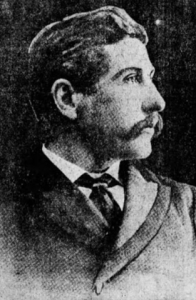
Captains of Industry
Many of the Irish who came to America fleeing poverty and oppression achieved varying degrees of success, some spectacularly so. One little-known standout was Charles Michael Higgins. Born in Co. Leitrim in 1854, Higgins emigrated to Brooklyn, New York with his parents in 1860. Although unable to finish formal schooling, he educated himself, became an inventor, and founded the internationally successful Charles M. Higgins & Company, the manufacturer of India Inks.
An active inventor, Higgins went on to be granted twenty-one patents in his career. He took great interest in American history and donated the statue of Minerva, the Roman goddess of wisdom, which stands to this day in front of his mausoleum in Green-Wood, on the site of the Revolutionary War Battle of Brooklyn. The statue, erected at the highest elevation in Brooklyn, was positioned to face the Statue of Liberty in New York Harbor. (Despite development, Minerva’s view remains unobstructed to this day.) The unveiling ceremony, on August 27, 1920, the 144th anniversary of the Battle of Brooklyn, was attended by hundreds of prominent New Yorkers, including Governor Al Smith.
Across the road from Higgins stands the mausoleum of Marcus Daly, one also born into poverty in Ireland, but who rose to become an extremely wealthy copper mine owner. Daly was unique among mine owners in that he treated his employees fairly and paid them well, a rarity in those days.
Not far away, entombed with his family in one of the largest and most elaborate mausoleums in Green-Wood, is John Mackay, one of the “Silver Kings” of mining, whose family emigrated from Ireland in 1840, when he was nine years old. Upon completion of his schooling in Brooklyn, Mackay took the advice of another future Green-Wood resident, Horace Greeley, and went West. It paid off, as he managed to amass one of the largest fortunes in America through silver mining.
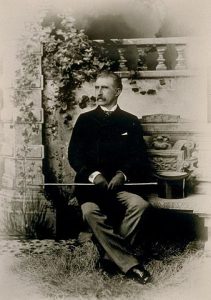
Mackay’s philanthropy was on the scale of his contemporary Andrew Carnegie, though, unlike Carnegie, few know of him today. One example of his generosity was the San Francisco Opera, which he founded and supported. He also supported the Catholic Orphanage in Virginia City, Nevada.
Mackay came back East and made another fortune in the transatlantic cable business, managing to reduce the cost of sending a telegram to Europe by two-thirds. Later, his company was the first to lay a cable across the Pacific Ocean. After his death, his wife and son Clarence founded the School of Mines at the University of Nevada in his memory, which the Mackay family continued to support right through the Great Depression. A bronze statue of Mackay, dressed as a miner, stands in front of the school. In addition, a mountain range in Antarctica is named after him.
While the record indicates that the Mackays were basically aboveboard in their businesses, they nonetheless took the precaution of having their mausoleum wired with electricity and heat (the only one in Green-Wood so equipped), rumored to be an inducement for the clergy to come and pray for their souls. The fund set aside to endow these amenities does so to this day and priests continued to say Mass in the tomb until 1954.
The Irish in Theater
As has often been the case with immigrant groups, many of the nineteenth-century Irish-born Americans came to prominence in their adopted country through the theater. Many of these theater people, who knew each other in life, are buried in Green-Wood Cemetery.
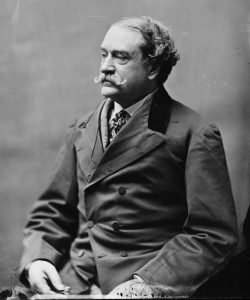
John Brougham’s life and career resembled a roller coaster ride. His father was born into a wealthy and influential Anglo-Irish family. His mother’s family were impoverished French Huguenot refugees, and his paternal grandfather disowned his son for marrying a “doweryless” woman. The family managed to get along until John’s father died suddenly, leaving his widow and their two sons penniless.
Fortunately, her sister had married well, and as she and her husband were childless, they took in the Broughams, and the husband became a surrogate father, raising the boys and paying for their education. After several attempts, John finally made it into Trinity College, where his academic career was lackluster at best. As he described it, “I very soon found out that my impulses were the reverse of studious; and being indolent, except in the pursuit of amusement, as a matter of course, I segregate with ‘birds of a feather,’ individuals as wild, reckless and unreflecting as myself.”
He did manage to graduate, but it was at Trinity that he was bitten by the theater bug, from which he never recovered. He drifted to London where he found work on the stage, and never looked back.
In 1832, John Brougham arrived in New York City and immediately found work as an actor. He then joined a repertory company that toured the country. His initial success earned him a good deal of money, unusual for an actor in those days. But he lost it all to professional gamblers on a Mississippi River steamboat.
Returning to New York City “wiser and poorer,” Brougham became associated with William Burton, an established theater owner for whom he wrote several plays. He then moved on to become the manager of Niblo’s Gardens, a popular theater. Next, he opened his own theater, Brougham’s Lyceum, in 1850. Once again, this venture started out well but soon ran into difficulties involving an unsafe building. The final blow came when a swindle by one of his “friends” left him not only broke but deeply in debt. He eventually paid off all his debts and moved to London for a while, where he produced several of his own plays. While there, the American Civil War broke out and he was stranded in England for the duration.
After the war, Brougham returned to New York and continued working in the theater, becoming a fixture in the theatrical and literary life of the city. He kept a diary in which he often commented on life in the theater. These reflections were later adapted to become his autobiography, and in one part he commented on the public’s misconceptions of actors: “As a class, we are laborious, our mornings are devoted to study and rehearsals, our evenings to acting and we haven’t the time to be very wicked. In fact, generally speaking, the vices of the theatrical profession end where the crimes of some of the ministers begin.” In his retirement, Brougham became a founder, president, and vice-president of the Lotos Club, a literary club still active today. After an adventurous life, he died peacefully on June 6, 1880, and lies beneath a large stone marked simply, “Brougham.”
Another Irishman who did extremely well in the early New York theater world was William Niblo. Born in Ireland in 1798, Niblo came to America as a young man and found work as an apprentice at a coffee house. This was the beginning of a charmed career. He seems to have possessed a naturally outgoing and pleasant disposition. Indeed, his obituary in the New York Times described him as “jovial, kind-hearted and generous almost to a fault.” He also had an inclination toward entrepreneurship, quickly rising through the ranks at the coffee house. Of course, it did him no harm to marry the boss’s daughter. Niblo soon succeeded his father-in-law and expanded the little place into a larger operation called the Bank Coffee House, which enjoyed the patronage of many wealthy merchants of the city. Apparently, providing food and drink to his upscale clientele appealed to Niblo, and the coffee house developed into a successful restaurant. Niblo realized the potential of owning a theater, sold the restaurant, purchased land nearby, and opened Niblo’s Gardens, a theater with a saloon attached to it.
This innovative venture prospered from the outset, due largely to Niblo’s energy, personality, and advanced management skills. He hired capable people to run his theater, but he still oversaw the entire operation. He was constantly on the lookout for new acts for his venue, which ranged from vaudeville to complete Italian operas and the newly formed New York Philharmonic,
and everything in between.
In 1835 Niblo’s Gardens hosted P.T. Barnum’s first Exhibition, and after Niblo’s retirement his Gardens produced what many consider the first musical comedy staged in New York, “The Black Crook,” in 1866. With its extensive use of chorus girls, this show was thought somewhat risqué for legitimate theater at the time. As described in Mark Twain’s review: “The scenery and legs are everything . . . Girls . . . nothing but a wilderness of girls . . . dressed with a meagerness that would make a parasol blush.”
Niblo understood to what extent a service business depended on its employees, and so he was an extremely generous employer, paying everyone who worked for him, in whatever capacity, very well. He even gave some of his long-time employees a pension on retirement, a relatively rare benefit then and now.
Niblo’s Gardens attracted all the great names in the theater: Dion Boucicault, another Irish-born actor and playwright; his wife Agnes Robertson, a famous singer of Irish songs; and William Burton, Edwin Forrest, Matilda Heron, and Laura Keene, among many others. The theater burned down twice, but each time Niblo replaced it with a bigger and better one. Niblo’s Gardens continued until its final performance on March 23, 1895.
Niblo gradually acquired a large art collection and upon retirement devoted his final years to philanthropy, with a particular interest in art museums and churches, even donating a stained glass window to Calvary Episcopal Church, which remains today behind the choir loft with Niblo’s name clearly visible at the bottom.
When his beloved wife, Mary, died in 1851, William Niblo began construction on his family mausoleum in Green-Wood Cemetery. The elaborate structure, built alongside a lake, had the unique feature of a large front lawn where the successful restaurateur would host picnics on weekends. Niblo stocked the lake with goldfish and, as all the lakes in Green-Wood are connected, soon all the lakes had goldfish. Their descendants thrive there today.

William Niblo died peacefully on August 21, 1878, at the advanced age of 80, and despite his extensive philanthropy, left an estate of approximately $150,000. After the customary bequests to family, friends, and charities he left a final bequest to Green-Wood Cemetery of $5,000 for the future maintenance of his family mausoleum.
Among the most noteworthy Irish expatriates reposing in Green-Wood is Matilda Heron – a famous actress in her day, with an erratic career and an equally erratic personal life. Born in Labby Vale, Draperstown, County Derry, on December 1, 1830, Heron emigrated to America with her family sometime in the 1840s, arriving in Philadelphia. They quickly prospered, with her father soon owning a lumber mill and her older brother, Alexander, going into the steamship business, eventually establishing the Heron Line of Schooners.
When Matilda’s father died, Alexander became the patriarch of the clan. Matilda had always wanted to go into the theater, an ambition of which he did not
approve. Eventually, however, she got her way, studying acting and making her debut at the Walnut Street Theatre in Philadelphia. She was soon performing in various cities, appearing in John Brougham’s adaptation of Dickens’ Dombey and Son, in which she was seen by Thomas Hamblin, manager of the Bowery Theatre. Hamblin offered her a job in New York, where her career took off. Matilda had a unique acting style for the time, which could be called “natural.” She was not given to exaggerated gestures or overdone speaking. This endeared her to many of the more discerning critics of the day.
With her career moving along, Matilda decided to try her luck in California. The West was still frontier, and many residents were eager for whatever art and culture they could find, so it was attractive to theater people from the East. Matilda had a difficult journey, her manager died on the way, and she arrived in San Francisco alone and broke. Her reputation preceded her, however, especially among the large Irish community. She became an overnight sensation, but soon foolishly married one of her biggest fans, a young Irish American district attorney with political aspirations named Henry Herbert Byrne. The marriage started to fail almost immediately and she left for New York.
From there she went to France, intending to hone her acting skills. She was at this time estranged from her brother, which distressed her as they had always been close as children. An uncorroborated story of their reconciliation survives, according to which she was attending a performance when she was tapped on the shoulder and heard, “Tilly, that’s a play that would make your fortune, if you would translate it for America.” She turned and saw her brother. On that auspicious day, two life-changing events occurred: she and Alexander ended their estrangement and she discovered the play that would bring her stardom and success.
The play was La Dame aux Camelias by Alexander Dumas, fils (illegitimate son of Alexander Dumas). It was based on a true story involving a courtesan. Matilda translated it, toned it down somewhat, and brought it to New York, where it was enthusiastically received. It was said that in her career she earned $150,000 from this play alone.
But while her career was soaring, her marriage was declining, and she soon filed for divorce. Matilda was scarcely out of one bad marriage, however, when she began another. Robert Stoepel, a well-known composer and conductor, pursued her relentlessly, soon winning her hand. Matilda was the recipient of bad legal advice and married Stoepel thinking her divorce from Byrne was final when it was not, making her a bigamist. Soon all three were at war, mostly over money, mostly Matilda’s. Byrne died and she left Stoepel, but her health declined.
Stoepel and Matilda had a daughter, Helene (nicknamed Bijou by her mother) who was devoted to her and stayed close to her throughout her illness and death. Despite her two marriages Matilda always maintained that she was a devout Catholic and received the last rites. However, she requested that her funeral take place at the Episcopal Church of the Transfiguration in Manhattan, generally known as “The Little Church Around the Corner.” The church was packed to overflowing and the pallbearers had difficulty carrying her coffin through the dense crowd. Her coffin bore two nameplates: “Matilda Agnes Heron, died March 7, 1877 aged 46 years” and another, simply: “Camille.”
Matilda’s daughter went on to become the well-known actress, Bijou Heron. She married the Broadway producer Henry Miller, for whom the Henry Miller Theater was named. Their son, Gilbert Miller, went on to become one of the most successful Broadway producers, putting on nearly one hundred hit plays before dying at age 85 in 1966. Thus, Matilda Heron, born in Ireland, established one of the wealthiest and most successful Broadway dynasties in New York. She lies buried under an elaborate Celtic Cross in a beautiful section of Green-Wood, along with her daughter, Bijou, and her husband, Henry, and also, curiously, Robert Stoepel.
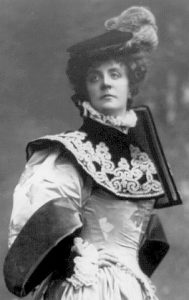
Another actress who did very well on the New York stage was Ada Rehan. Born Delia Crehan in 1859 in Limerick, she was brought to Brooklyn by her parents at age five. She had an early inclination for the theater, which her parents encouraged. In her first role, she was mistakenly billed as Ada C. Rehan, but she liked the name and continued to use it, dropping the “C.”
As Ada Rehan, she rose quickly in the theater and soon became the protégé of the highly successful impresario Augustin Daly. She stayed with him for most of her career, performing in New York and London, doing both Shakespeare (her favorite role was Kate in The Taming of The Shrew) and contemporary plays, mostly comedies, in which she also excelled. Indeed, Ada was so popular that she became Sarah Bernhardt’s chief rival, and while in London, Oscar Wilde was said to have written a part in one of his plays specifically with her in mind. Her full-length portrait, by John Singer Sargent, is in the permanent collection of the New York Metropolitan Museum of Art.
Rehan retired from the theater in 1905 and spent much time in her cottage in Ireland. Never having married, she died peacefully in New York in 1916 after a long and happy career. On her grave in Green-Wood is placed a large cross with “Ada Rehan” carved on it.
Far more turbulent was the personal and professional life of Eliza Gilbert. Gilbert was born in Grange, Co. Sligo in February 1821. Her mother, Eliza Oliver, was the daughter of the local landlord Charles Silver Oliver, Esq. M.P. and Mary Green, a laundress. Her father, Edward Gilbert, was a British Army officer stationed in Cork. After a tempestuous childhood in Ireland, India, and England, Eliza settled in London but, in need of an occupation, went to Spain to study dancing. Eliza Gilbert left London and Lola Montez, stage dancer, actress, and courtesan, returned.
Much has been written about Lola’s extravagant life in Europe, where she had an affair with Franz Liszt and later became mistress to Ludwig I of Bavaria, who named her Countess of Landsfeld. But what is less well-known is her transformation while performing in America. Despite being panned by almost all the critics, she became a well-paid dancer, more what we would call a “performance artist,” with the bulk of her audience being young men. On the way back from a successful tour of Australia, Frank Folland, her paramour and the leading man of her theater troupe, fell overboard and drowned. While Lola had nothing to do with his death, it apparently affected her deeply. Upon arrival back in America, she gave up her wild ways and sold her extensive jewelry collection to help Folland’s family.
In 1857, Lola began what was to be the most successful phase of her career, lecturing. She came under the influence of some Universalist ministers, and her lectures were hailed as uplifting, many focusing on women’s issues of the time. She also wrote several best-selling books for women, a number of which are still in print today. Lola returned to Ireland as part of a lecture tour including England and Scotland and was enthusiastically received everywhere, especially in Cork and Limerick, where she partly grew up. She returned to New York and continued to lecture, but died suddenly of pneumonia on January 17, 1861, just shy of her 40th birthday. Her marble stone at Green-Wood deteriorated and was replaced with a granite stone not long ago.
Civil War Heroes
Michael Fitz James O’Brien was one of the most well-known characters in pre-Civil War New York but is virtually unknown today. O’Brien was born in Cork in 1826 to a wealthy Catholic family. Upon attaining his majority, O’Brien inherited his maternal grandfather’s entire estate, some eight thousand pounds, a very large amount at that time. Unfortunately, the newly rich O’Brien immediately departed for London, where he went through the entire sum in two years.
He arrived in New York in 1851 and made a precarious living writing. Over the course of ten years, he published approximately four hundred stories, poems, and articles, two hit plays, and several translations. Despite this output, O’Brien managed to find time for an ample social life, including the theater, balls, and bar room brawls. He became the first columnist in New York, writing “The Man About Town” column for Harper’s Weekly, and then for the New York Picayune. An outspoken social and theater critic, he was both loved and hated.
At the outbreak of the Civil War, O’Brien joined the Union Army, was wounded in battle, and died on April 6, 1862, in Maryland. He never married, and his only living relatives were his mother and stepfather. Although they were both wealthy people, his body lay in Green-Wood’s receiving vault for fourteen years before he was interred there in 1874. The responsible party’s name is unrecorded.
O’Brien was far from the only Irish-born New Yorker to fight in the Civil War and eventually end up in Green-Wood. Numerous Irish heroes, veterans of the most deadly armed conflict in our nation’s history, lie buried within its fences, among them four generals. One of these is James C. Briscoe, born in Willmount, Co. Kilkenny, in 1834. Briscoe graduated from Trinity College and came to America in 1854, where he became a civil engineer. At the outbreak of the Civil War, he joined the First New York Volunteers and put his engineering skills to work. He rose through the ranks and, having distinguished himself at the capture of Petersburg, was brevetted General. Briscoe was wounded several times, and at the close of the war was appointed President of the Examining Board for officers.
Briscoe was supposedly dismissed from the army for stealing, but this was not mentioned in his obituary in the New York Times and it is curious that he would have been given a government job after the war with that on his record. He died in 1869.
Another Irish-born general, Samuel Graham, was born in Belfast in 1813. Graham also joined the Union Army at the beginning of the war, and for his meritorious service at Harper’s Ferry in 1864 was promoted to Brigadier General. Graham died in 1884.
James Lawlor Kiernan had a brief but interesting life. Born in Mount Bellew, County Galway, he came to America after attending Trinity College to study medicine at the fledgling New York School of Medicine. He practiced medicine and also published the New York Medical Journal from 1859 to 1861, and when the war began was commissioned as an army surgeon. By choice, he became an infantry officer and was severely wounded in the Battle of Port Gibson, where he was mistakenly left for dead but subsequently captured by the Confederates. He managed to escape from military prison and rejoin the Union forces. President Lincoln himself then appointed Kiernan Brigadier General in 1863 and he served out the remainder of the war in that capacity. Afterward, he was appointed consul to the Chinese city of Chinkiang, but had to return after a few months due to failing health, the result of his wounds. Kiernan returned to his medical practice but died in 1869 at age 32.
The most flamboyant of all the Irish-born generals, however, must be Brigadier General Thomas Sweeny, known as “Fighting Tom” and “The Hero of Shiloh.” Sweeny came to America as a child with his widowed mother. He expressed an early interest in the military, and as soon as he came of age joined the army. He served heroically in the Mexican War where he lost his right arm. This seeming disability failed to derail his military career, and Sweeny remained in the army into the Civil War, where he managed to be wounded in just about every battle in which he fought (in one battle he was shot three times). Indeed, after one encounter in which Sweeny wasn’t wounded, General Grant jokingly declared that it therefore couldn’t count as a battle. Sweeny served with distinction, always at the head of his troops. He would lead them into battle with his rifle in his left hand and his horse’s reins in his teeth.
After the war he retired, but he had one last battle to fight. The Fenians named him their Secretary of War, and he participated in the doomed invasion of Canada. This ill-planned fiasco landed most of its leaders in jail, but Sweeny was soon released and reinstated in the Army. In 1870 he retired to his home in New York, where he died of old age in 1892. A bronze bust of Sweeny, done posthumously by Irish-American sculptor James Kelly in 1914, was recently given to Green-Wood Cemetery and will soon be placed in front of his grave.
There are two Irish patriots, part of the Young Irelanders movement of 1848, memorialized in Green-Wood. One is Patrick O’Donohue, who was convicted of treason in an Irish court for his part in the uprising, sentenced to death, but instead was given life imprisonment in Van Dieman’s Land, where he founded Australia’s first Irish-themed newspaper. He escaped and made his way to Brooklyn, New York where he died in 1854 and is buried under a large flat stone which bears his name, date of death, a cross, and the words “Irish Rebel,” all clearly visible after over 150 years.
Another legend, who was both an Irish patriot and an American Civil War hero, is Thomas Francis Meagher, who was born in Waterford City, of which his father was mayor. Meagher was prominent in the Young Irelander Rebellion and was sentenced with O’Donohue, and sent to Van Dieman’s Land, and, like him, he escaped. He arrived in New York City where he established a successful law practice and at the outbreak of the Civil War helped establish the Irish Brigade and became their General, leading them through many of the most difficult battles of the war. After the war, while serving as Acting Governor of the Territory of Montana, Meagher drowned in the Missouri River under unexplained circumstances, and his body was never recovered. The Green-Wood Historic Fund erected the gravestone to Meagher, whose body was never found after he went missing on the Missouri River in 1867, and placed it next to the grave of his wife Elizabeth Townsend Meagher, one of the founders of Catholic Charities.
The sketches presented in this feature are of just a few of the many Irish people who overcame obstacles, sometimes seemingly insurmountable, to achieve great success and make lasting contributions to their adopted country. Unfortunately, for many of them, these accomplishments remain virtually unknown today. Though diverse in their pursuits, what they all had in common was a seeming inability to accept defeat. Awareness of their lives and legacies, and those of numerous others like them, is important to the understanding of the history of the Irish in America. Green-Wood Cemetery is proud of its longstanding connection with the Irish; in fact, through the cooperation of local Irish organizations, a monument has been erected close by the grave of Matilda Tone, on which are engraved the names of twenty-eight Irish-born soldiers who made the ultimate sacrifice for their adopted country in the Korean War and who, on October 30, 2003, were made citizens of the United States by a Special Act of Congress.
Updates
Since this article was written in 2013, another notable Irish American, writer Pete Hamill, got his wish to be buried in Green-Wood – close to Boss Tweed. In an interview that ran in Irish America, years earlier, he said the Tammany Hall politician would make for a most interesting companion with whom to share eternal rest. Pete passed away on August 5, 2020.
In 2012, Hurricane Sandy swept through the region almost 300 of Green-Wood’s 8,000 trees were felled, damaging some of the cemetery’s oldest statues and memorials. More recently, the cemetery was hard hit by Hurricane Isaias, in 2020 and staff are actively working to restore the grounds and statuary. For more information, or to donate to Green-Wood’s preservation visit www.green-wood.com or call 718-768-7300.
On July 2017, 150 years after his death, a bust to Meagher was dedicated.
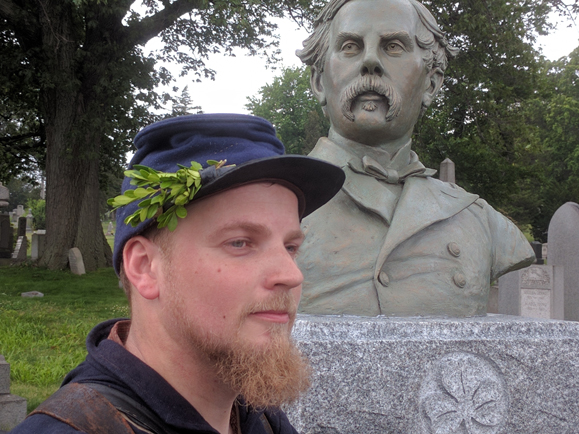
Green-Wood Cemetery is located in the Greenwood Heights section of Brooklyn, a few blocks below Prospect Park. Guided tours on foot and via trolley are available, and the cemetery is open to visitors seven days a week.

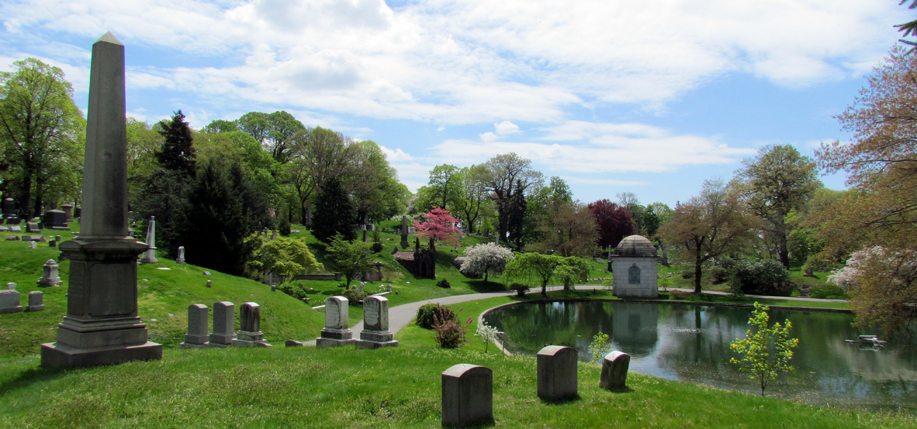
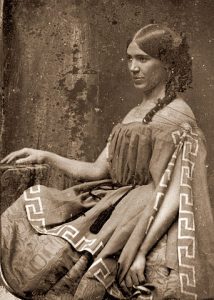
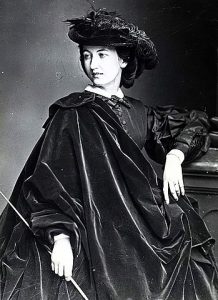
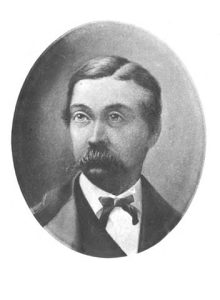
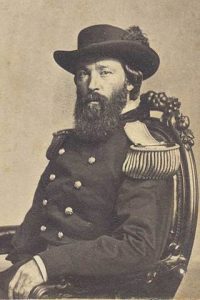

found article to be very informative and know some of my relatives are buried there.
My Flynns were buried in the “old section” (1853) and we are related by marriage to the Donahues
An amazing educational article. Although, I received my M.S. degree from Long Island University in Brooklyn, I never learned much about its’ history. It was a matter of go there to the lectures, come out and drive back to my then home in the Bronx.
Jack O’Donnell, County Longford resting in Green-Wood